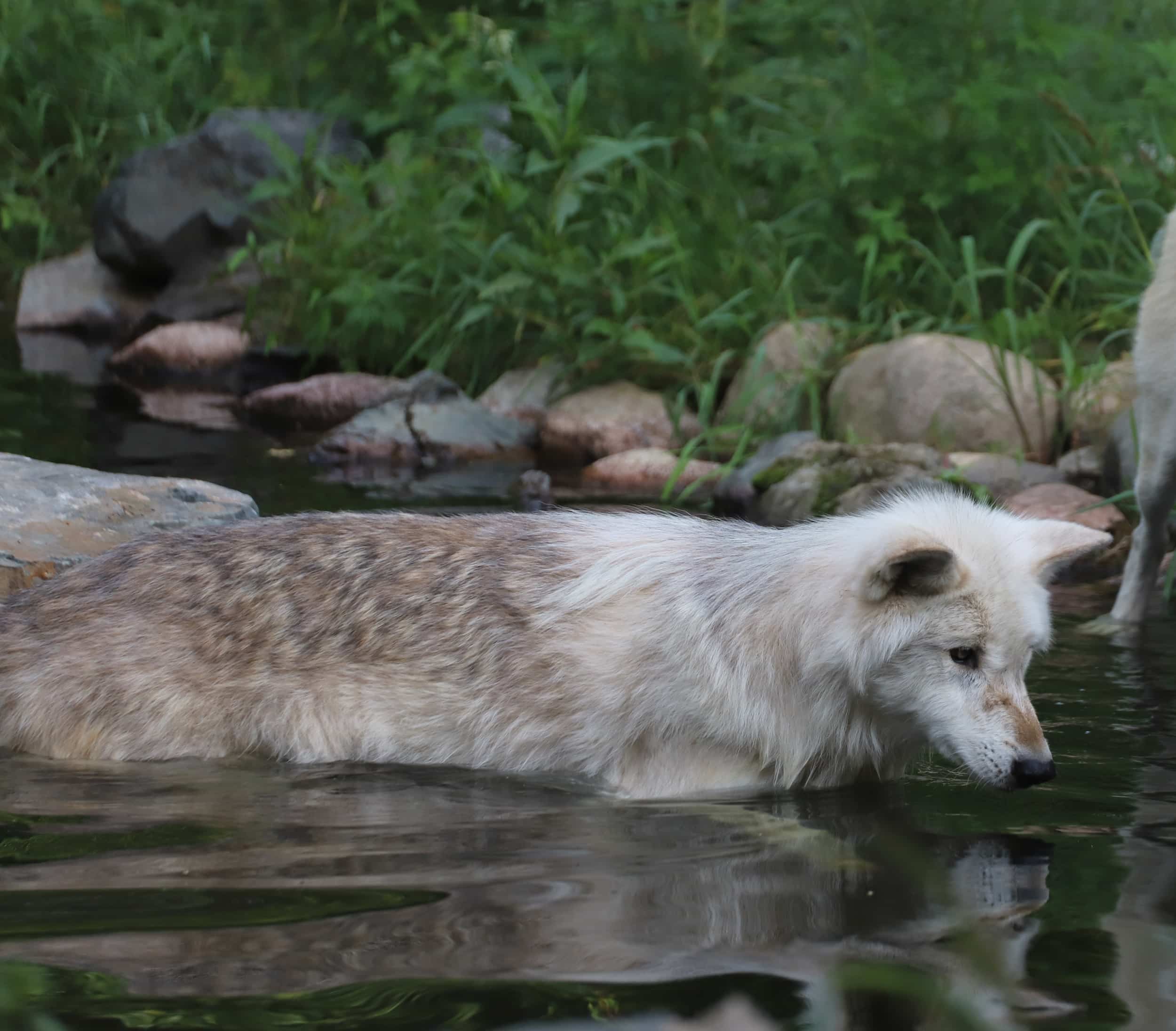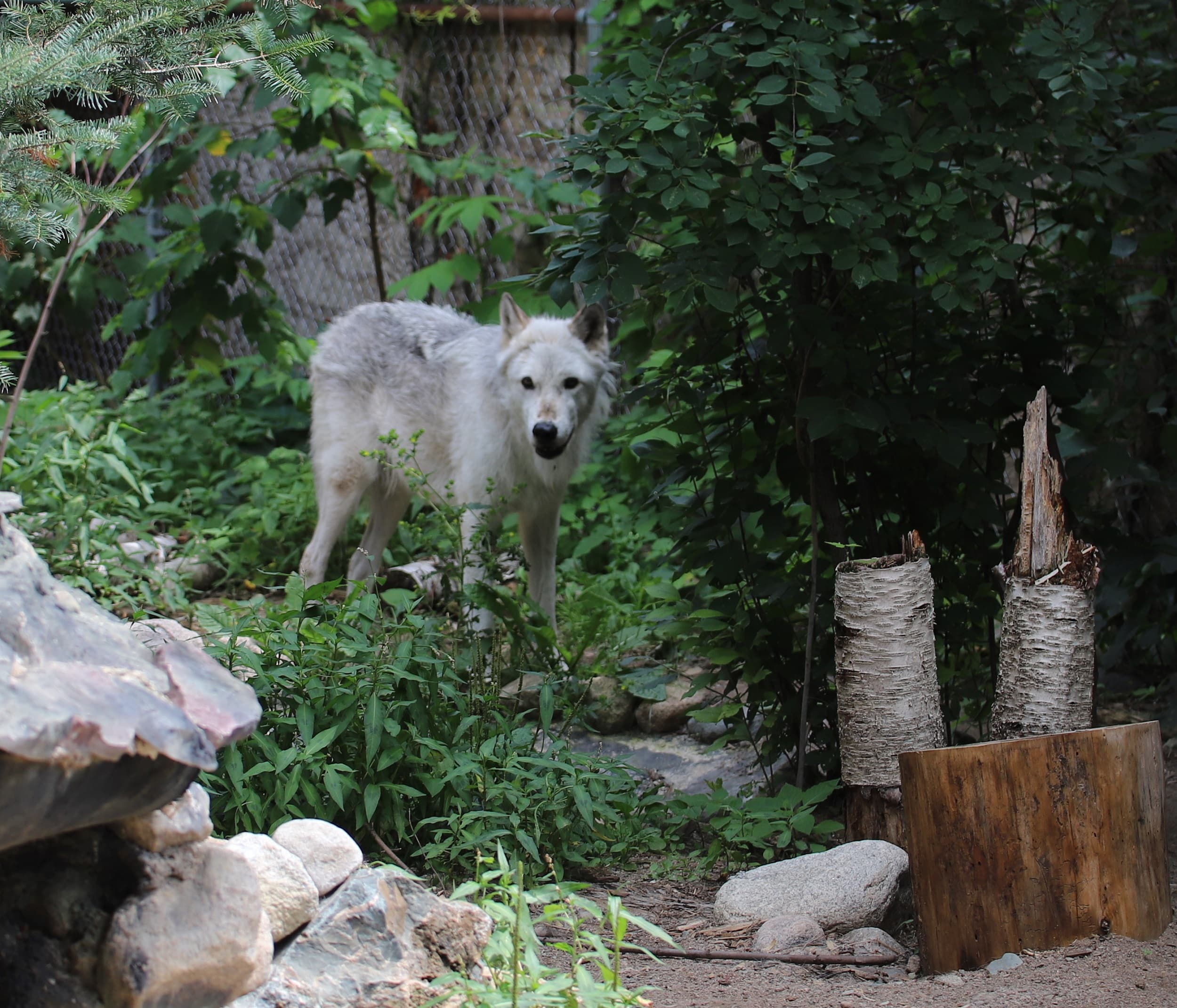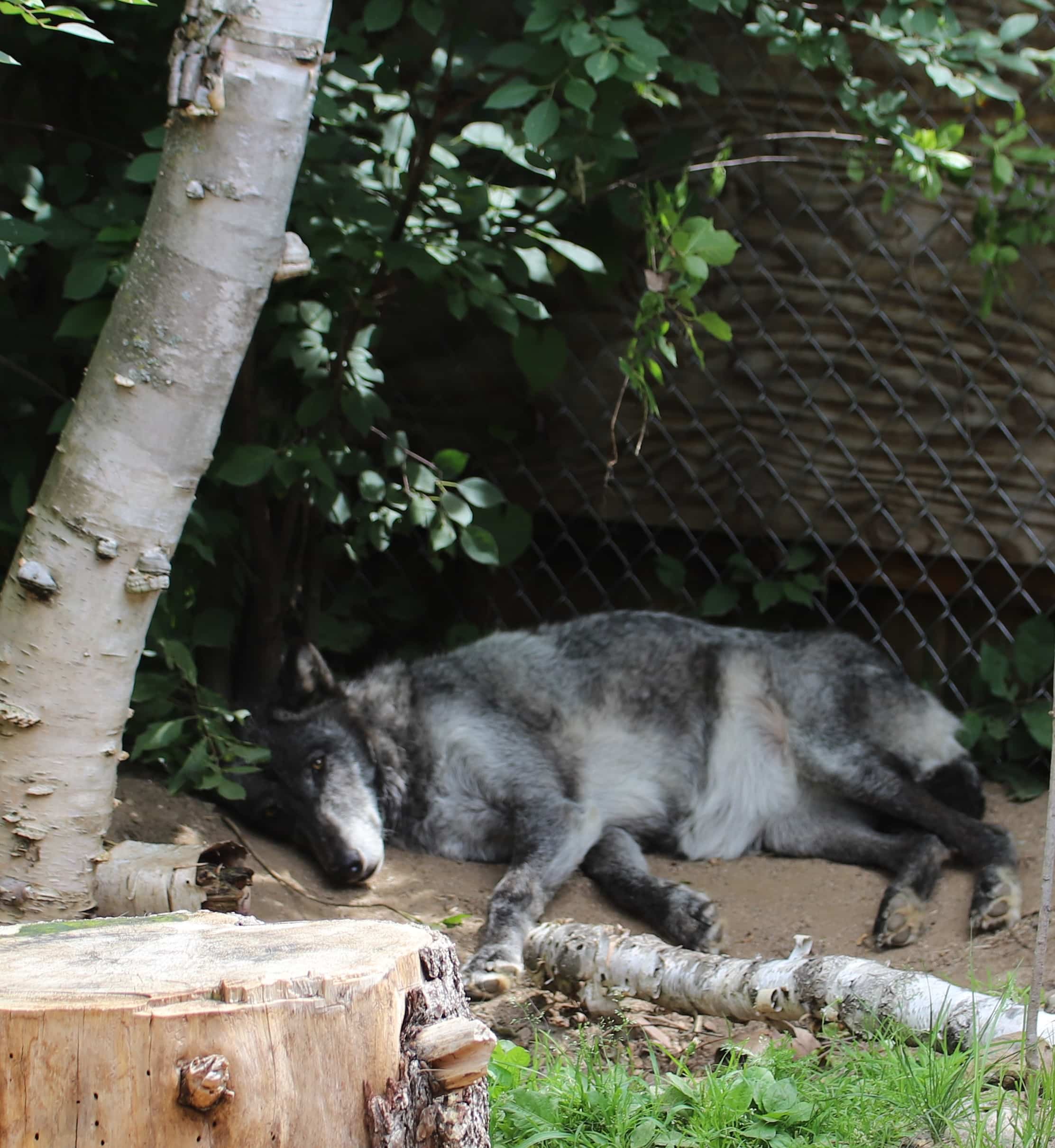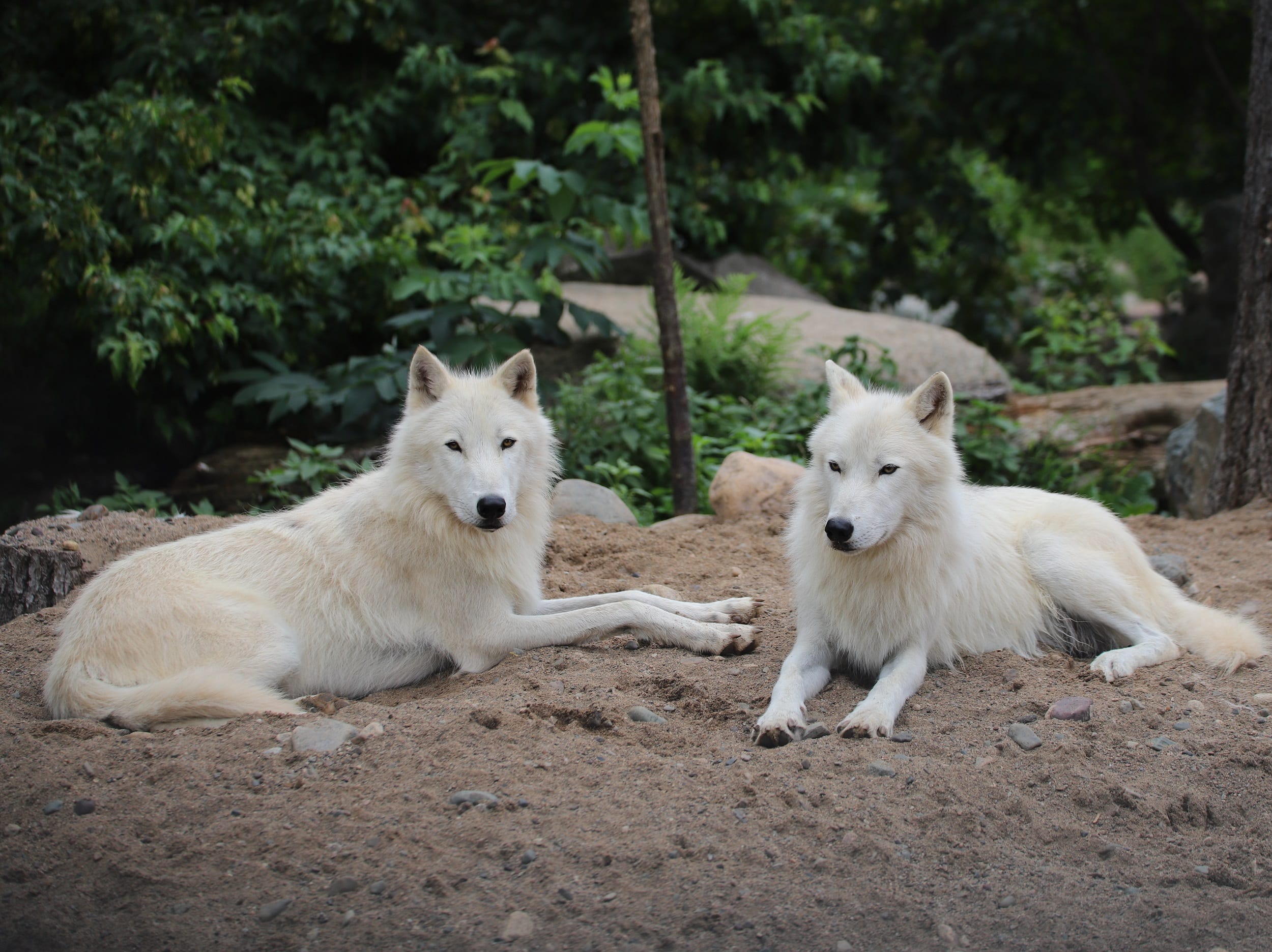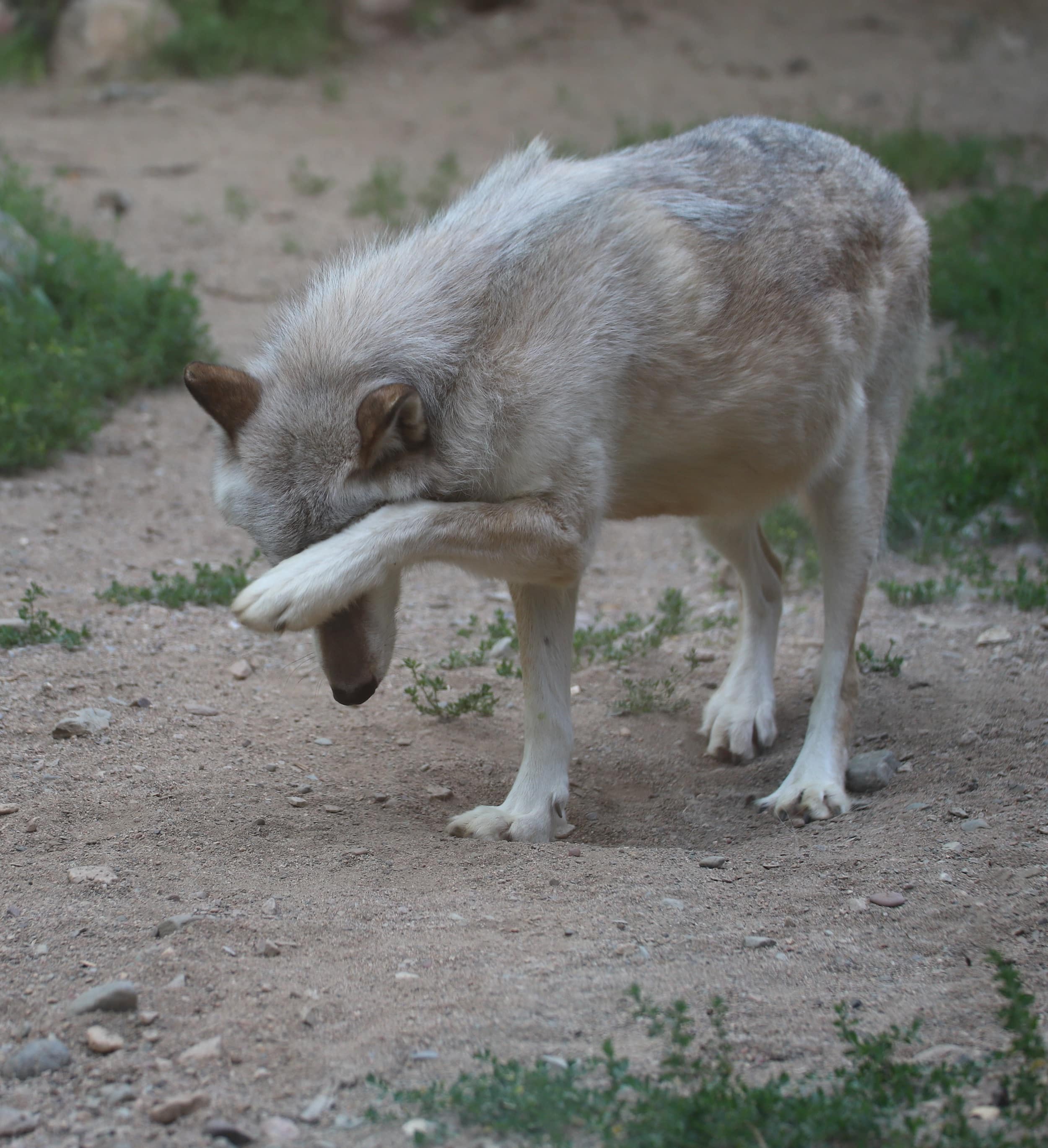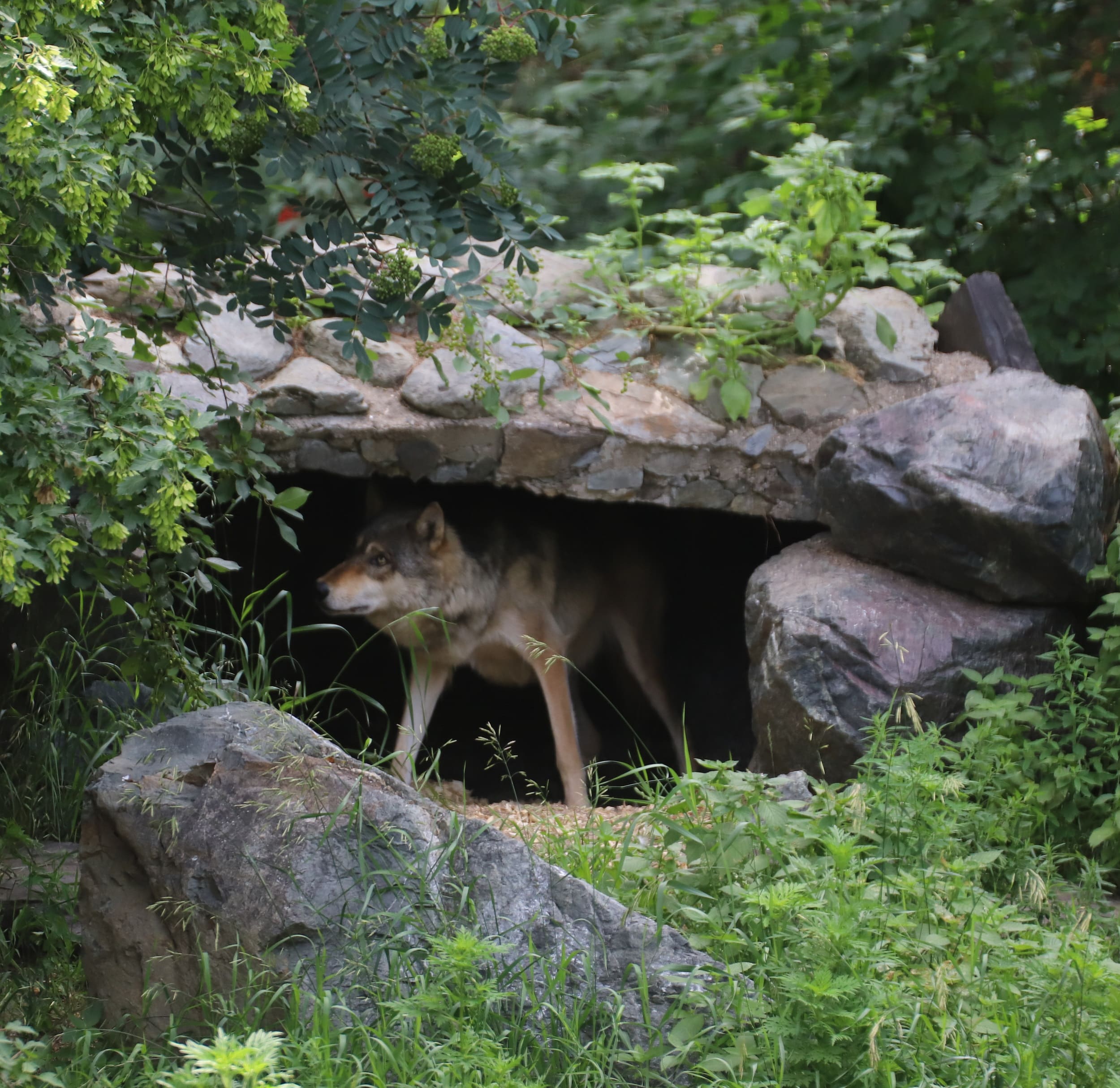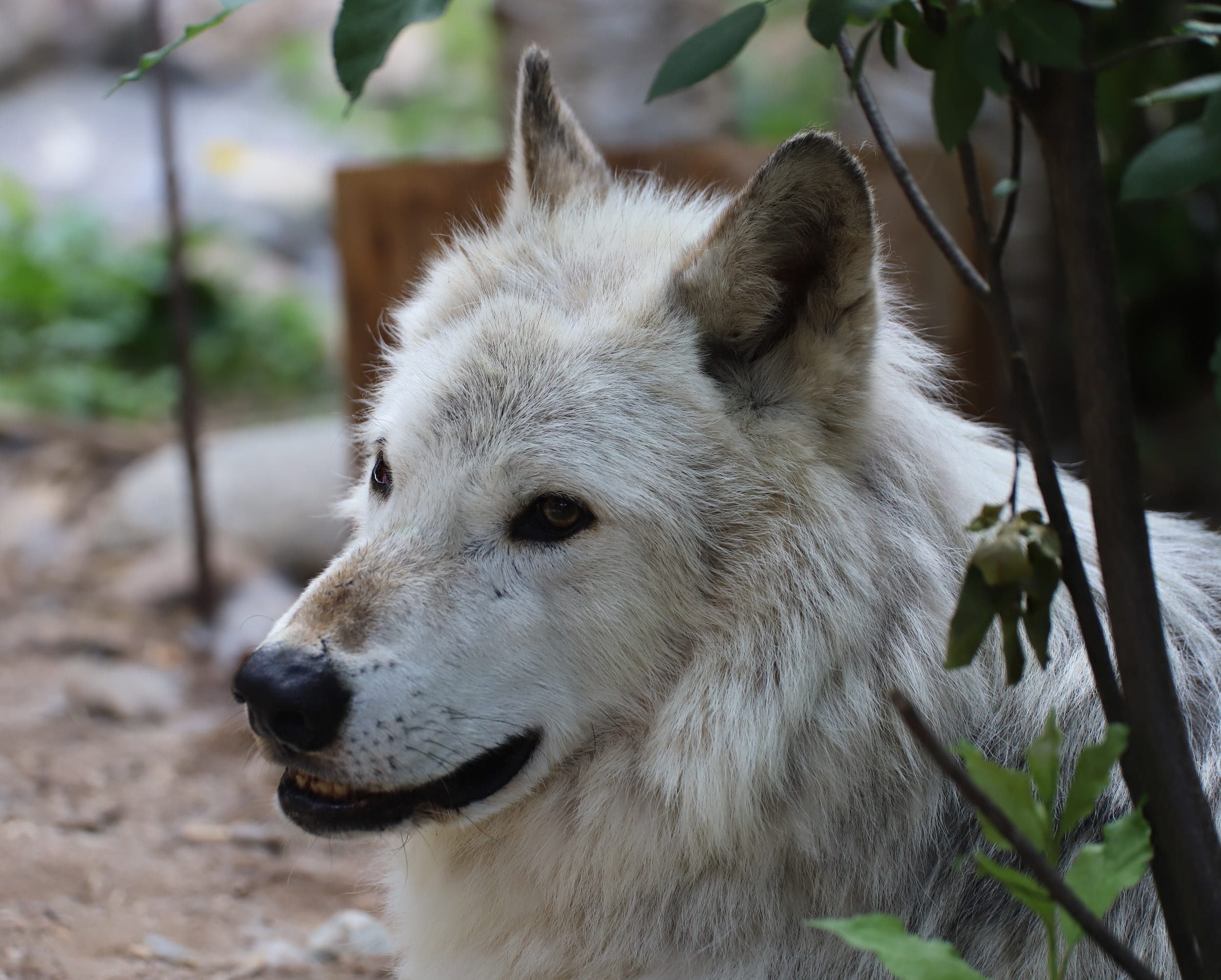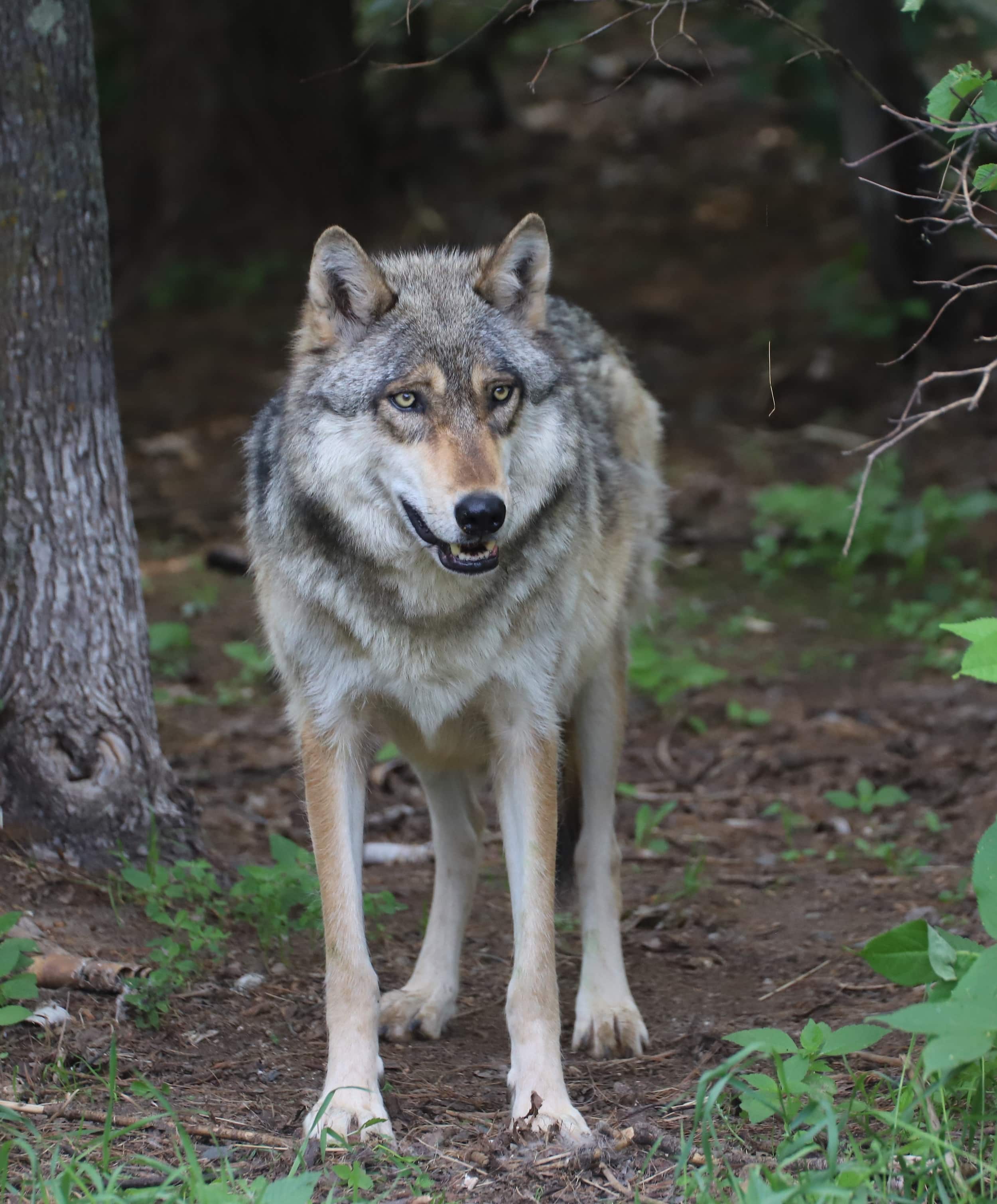Thanks to Anika Hahn’s donations a few years ago, we are able to maintain a relatively algae free pond through the use of UV filters attached to our pond pump. The result is a clear view to the bottom of the pond. This is enticing to Denali who has retrieved items from the pond by use of his over-sized front paws and an inhibition to dunking his head. Not only is this good stimuli for Denali, but it also gets him into the pond on some warmer than usual Minnesota days. As the largest wolf on Exhibit, Denali does have some issues with the heat; staff need to be very observant to his mobility and general attitude, especially when the humidity is over 80%.
Archives
It seems like just yesterday we were brushing the wolves and now Grizzer is growing his winter undercoat. In Minnesota, this could be a definite advantage as weather can change quickly. Last week, we had a few days of cooler weather and something in the wolves changed. Grizzer certainly became more alert to Luna’s presence in the enclosure, especially during feeding time. Grizzer continues to show strength in his back right leg with a demonstrations of “Raised Leg Urination” or RLU’s that have a lift height well above his back, all supported by his back right leg. We are definitely pleased with his mobility and every day is cherished at this age.
Luna’s most common resting spot is in the cool soil near the Exhibit Pack misting system. We manage the vegetation to provide a significant amount of shade to add to the cool soil and that makes a comfortable spot for a dark color phased wolf that absorbs heat quickly. We don’t know what Luna’s reaction will be to Aidan’s appearance in an adjacent enclosure. As with all of our retirement plans, wolves will share a fence line to look at compatibility issues before a reunion is planned. We know Luna’s medical assessment and too much activity could have a negative impact on the progress we have made with her over the past two years. Luna’s not the best judge of moderation in food possession or heightened play bows and chase scenes with pack mates.
Earlier this winter we had some concerns about Grayson being too attached to Aidan to make a change in pack leadership. This concern has diminished as Grayson is getting a significant amount of social reassurance from his litter mate, Axel. There is no doubt, these two still spend a fair amount of time wrestling, pinning, squashing and jaw sparring like they did when they were pups, but we have many observations where Grayson seeks out Axel and even uses him as a pillow.
On Wednesday, July 25th, the Center wolf care staff will implement a medical plan that involves a number of tests and exams to get a good assessment on Aidan’s health. Behavioral observations tell us that he still has a physical presence in the pack, but his leadership has been impacted over the past winter of seasonal activity and we need to know if that declining leadership has a medical reason. While we are concerned about the testing for status of the remaining Exhibit Pack members, but we know that it is time for Aidan to transition into retirement. This is the calmest time of the year on a wolf exhibit, so action now is appropriate. Based on our experience, by mid-august, the seasonal hormones change and make for some challenging dynamics. We are prepared to have at least a week of overnight observation after the move, but suspect there to be heightened activity in the Exhibit Pack for the upcoming season. At this time, we will not retire Denali until we see behavioral issues that make that an appropriate move. Check out our Youtube channel and our August 10th webinar, where we will include a view of Aidan’s circumstances.
As you can see, Boltz still has some phobias with the summertime buzz of the exhibit. He is improving, but the others still see his behavior as weak and a source of some dominance targets. We have several overnight groups that have provided some good information on pack dynamics. On July 13th, we had a program called “Wolves After Dark”, where people sleep adjacent to the wolf enclosure and have a first hand view of the action. This program was critical to provide insight on pack dynamics as were making plans for Aidan’s medical exam and upcoming retirement. It is important to have a good assessment of the pack before any major changes occur. Based on their data sheets, it does appear that Grayson is less dependent on Aidan, making the transition in leadership a little less stressful. Since most of the tension in the pack is between Boltz, Aidan and Axel, there should be less intensity that will likely change Boltz’s demeanor.
Grizzer is doing well, despite some hot humid days and a bit of stability issues during these heat spells, he has a great appetite, has been spending more time with staff and has allowed us to remove most of his undercoat. He’s displaying a behavior called “Grinning” in this post’s photo. Based on our interpretation of events, Grinning is displayed when wolves are satisfied with circumstances. What circumstances cause Grizzer to grin? The mist from the Exhibit Pack is one circumstance. A full belly of food and a sleeping Luna would be two others that come to mind. The main issue we are watching is his response to stimuli, both sound and visual. His hearing seems to be great, but we do seem him struggle with visual distance, especially recognizing individuals at the fence. He recognizes the voices of the wolf care staff and whines to greet them, but if staff come in quiet and don’t vocalize, Grizzer is uncertain of their identity. Grizzer weighed in at 112 pounds, so we increased his diet a bit. We want to make sure he enters the winter between 115 – 120 pounds, giving him a buffer for calorie use on those cold winter nights. Although, Grizzer has been using the heated building on several occasions during recent thunderstorms, so he may be our first retiree to sleep indoors at night. We do have to be a bit cautious that an indoor, outdoor lifestyle doesn’t reduce his undercoat development, nor impact his social relationships with his pack mate or maybe pack mates depending upon Aidan’s transition.
Each pack member has a different relationship with the other individuals of the pack. Since the 2016 introduction, Grayson has been on Denali’s radar. We know wolves identify weakness as a basis of prey selection, but in social relationships, we also see weakness being a target for rank order dominance. Since joining the Exhibit Pack, Grayson has been the frequent recipient of fore-leg stabs, inhibited scruff bites, jaw spars and the occasional chase behaviors. Now that Grayson is two years of age, Denali is learning what goes around, comes around. Despite Grayson’s 89.5 pound stature, when he decides to reciprocate Denali’s attention, Denali gets the message. But, summer is the calm time; most of Denali’s interactions with Axel and Grayson involve three masses of fur running, jumping, tail wagging and grinning.
Axel sure keeps Denali young. In this week’s photo, Axel is doing a ride-up behavior to Denali. This is a great example of the difference between a T-1 tail posture over the back and a T-2 posture, forming a straight line from the back. Both, T-1 and T-2 postures may indicate arousal or excitement; It could be dominance, it could be social or it could be antagonistic threat, it is important to watch other indicators. But, the T-2 or straight back tail is often a more focused posture associated with a predatory drive, meaning a bit less social response. The wag of the tail may also indicate the intent of the interaction; the speed and tightness of the wag should be noted as well. Some of the most social (and submissive) greetings are when the tail makes a full circle. In Axel’s case, the T-1 tail is as rigid as a stick and with little movement, likely expressing an aggressive arousal. As a 2-year old, he appears to have stabilized his weight at about 103 pounds.
In the past few weeks, the return of the Minnesota insect season has kept Boltz as a forest dweller, spending most of the day in the protective shade of the forest. This is great for his ears, as he doesn’t have any of the nasty fly bites at the tips of his ears that require a treatment of fly ointment. It is not so great due to the fact that his self-imposed isolation from the pack results in some unwanted attention upon his return. Even though the wolves reside within the same enclosure, there is still a psychological component to separations from the social group, even if it’s just for the day. There’s no doubt this is more challenging for Boltz because he seems to have voluntarily decreased his rank this spring, but anyone in Minnesota knows, summer is a short season and it won’t be long before the leaves are turning and Boltz is back in the action. If you are a viewer to our Youtube channel, you may have heard about Boltz’s bout of laryngitis. He has low tones, but he can’t hit the high notes, especially when howling. The Veterinarians are still researching this, but it doesn’t seem to have any impact on his food consumption or activity levels.

The International Wolf Center uses science-based education to teach and inspire the world about wolves, their ecology, and the wolf-human relationship.

